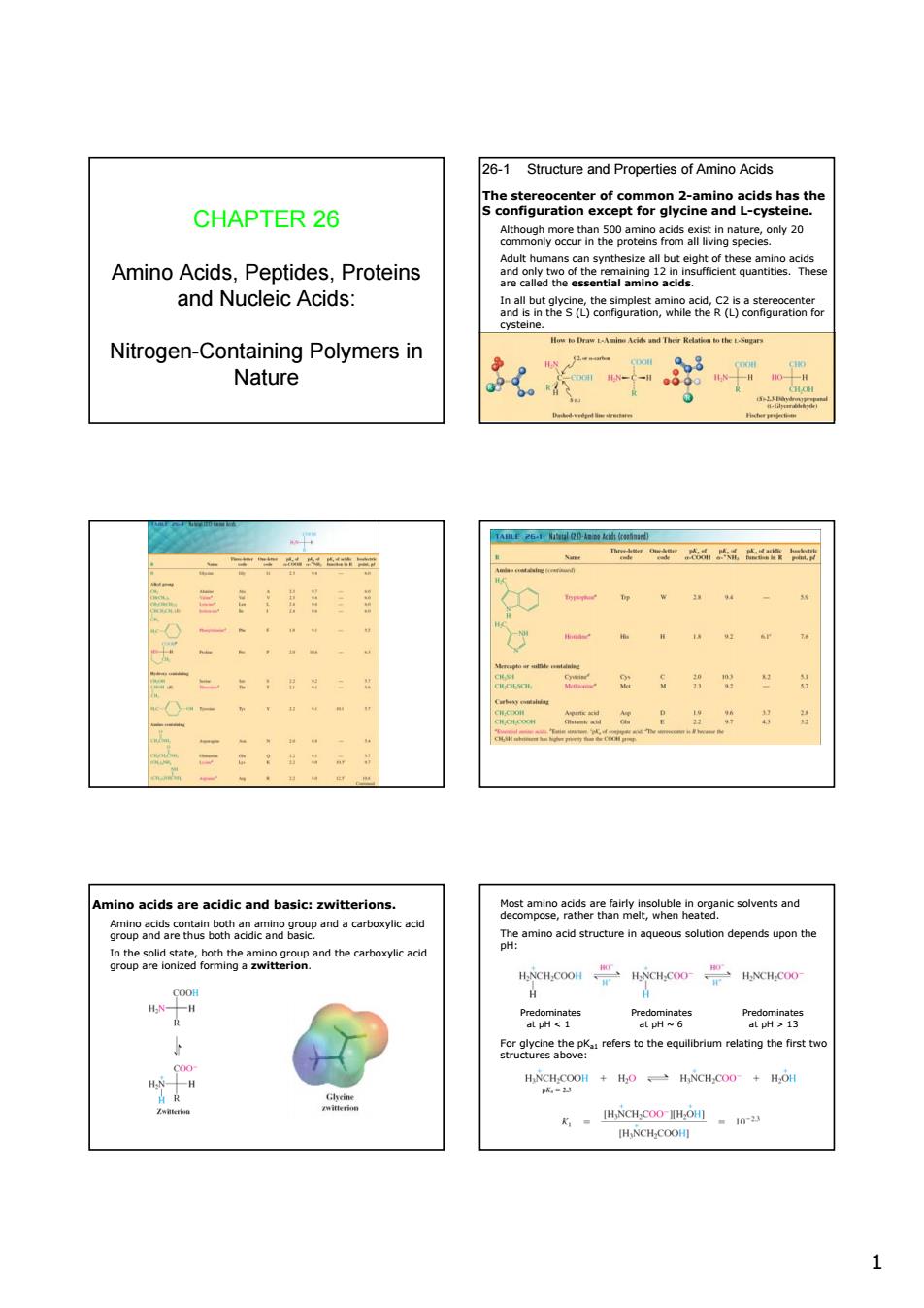正在加载图片...

26-1 Structure and Properties of Amino Acids CHAPTER 26 Amino Acids,Peptides,Proteins and Nucleic Acids: 品 Nitrogen-Containing Polymers in Nature (.Kw巴 aeaa8a32ncwensna mino acid structure in aqueous solution depends upon the 脚 p渊6 PatpH>13 efers to therumrelaing the rt 4NCo+40一HcH,c00+HO -0 IHNCH-COOHI 1 CHAPTER 26 Amino Acids, Peptides, Proteins and Nucleic Acids: Nitrogen-Containing Polymers in Nature 26-1 Structure and Properties of Amino Acids The stereocenter of common 2-amino acids has the S configuration except for glycine and L-cysteine. Although more than 500 amino acids exist in nature, only 20 commonly occur in the proteins from all living species. Adult humans can synthesize all but eight of these amino acids and only two of the remaining 12 in insufficient quantities. These are called the essential amino acids. In all but glycine, the simplest amino acid, C2 is a stereocenter and is in the S (L) configuration, while the R (L) configuration for cysteine. Amino acids are acidic and basic: zwitterions. Amino acids contain both an amino group and a carboxylic acid group and are thus both acidic and basic. In the solid state, both the amino group and the carboxylic acid group are ionized forming a zwitterion. Most amino acids are fairly insoluble in organic solvents and decompose, rather than melt, when heated. The amino acid structure in aqueous solution depends upon the pH: Predominates Predominates Predominates at pH < 1 at pH ~ 6 at pH > 13 For glycine the pKa1 refers to the equilibrium relating the first two structures above: